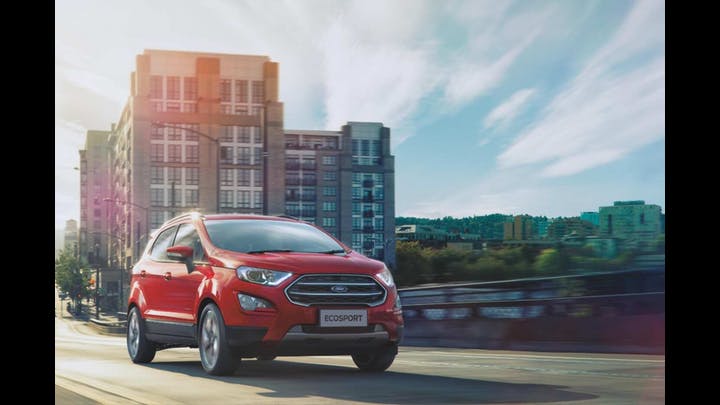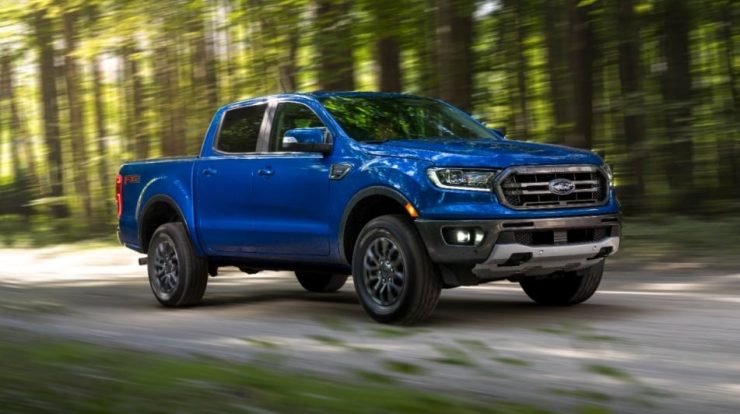
The 2021 Ford EcoSport is a low-cost SUV that’s excellent for city driving, but its fuel economy isn’t great, and rivals come with more features.
Overview
Not only is the EcoSport Ford’s smallest SUV, but it’s also one of the smallest SUVs on the market. It’s also reasonably priced, with prices starting at slightly over $20,000. A turbocharged 1.0-liter three-cylinder with front-wheel drive and a 2.0-liter four-cylinder with all-wheel drive are also available. Both have a six-speed automatic transmission and aren’t particularly fuel efficient. The EcoSport has a good ride and is easy to park, but it lacks certain essential driver-assist functions. Ford’s 8-inch infotainment system (standard on all but the basic model) is sleek and simple to operate. Although rear-seat knee room is limited and the cabin is tiny, front and rear passengers benefit from a higher seating posture.
Trims and Costs
The S, SE, SES, and Titanium trim levels are available on the 2021 Ford EcoSport. The SE is the most widely used. Because the base S lacks a full-featured infotainment system, that’s the one we’d recommend. When compared to better-equipped competitors, it’s difficult to justify the higher trims’ greater price.
S
With a starting price of $21,640 (plus a $1,245 destination fee), the EcoSport is a budget-friendly vehicle with limited features. Bluetooth, air conditioning, cruise control, power windows, power mirrors, power locks with remote, a Wi-Fi hotspot, and a basic radio with a 4.2-inch display are all included as standard features.
SE
An 8-inch touchscreen infotainment system with satellite radio, Apple CarPlay, and Android Auto is included on the SE ($25,205). A power sunroof, heated seats, roof rails, rear parking sensors, and passive entry with push-button start are all included on the SE.
Blind-spot monitoring, rear cross-traffic warning, navigation, ambient lighting, a seven-speaker audio system, and a 110-volt power outlet are all included with the SE Convenience package ($995). The 2.0-liter all-wheel-drive engine, which we suggest, is also available for $1,595 more.
Titanium
17-inch wheels, a 10-speaker Bang & Olufsen audio system, and leather-trimmed upholstery are included with the Titanium ($28,140). A heated steering wheel, GPS, a power driver’s seat, and rain-sensing wipers are also included.
SES The SES ($29,400) is the sole EcoSport model that includes the 2.0-liter engine and all-wheel drive as standard equipment. It also features a black roof, black 17-inch wheels, and black trim on the outside.
Performance and Engine
The EcoSport’s front-wheel-drive models are powered by a 1.0-liter turbocharged three-cylinder engine that produces 123 horsepower. A 2.0-liter four-cylinder engine with 166 horsepower is available to buyers who upgrade to all-wheel drive (something other competitors don’t provide). A six-speed automatic transmission is standard on both engines.
The 1.0-liter engine and front-wheel drive were standard on our test vehicle. This small engine appears acceptable in town, but it runs out of gas at greater speeds. Although the EcoSport’s six-speed automatic reduces engine droning when accelerating compared to the continuously variable automatic found in many small SUVs, it is still noisy.
The chassis tuning of the EcoSport is basically satisfactory. Given the short wheelbase, the ride is more comfortable than you might anticipate, and the steering weights up nicely once you get past parking-lot speeds. Although the SES model has a stiffer suspension, on a twisting road, a Hyundai Kona or a [Kia Soul](/kia/soul/) would seem more responsive.
Interior
The EcoSport’s interior design is simple, but the controls are simple and easy to operate. The front seats are roomy and have a higher seating posture than a hatchback. The back seat is similarly elevated off the ground. However, knee clearance is limited, especially behind a tall driver. And there isn’t enough room for three people to sit across from each other. The narrow rear windows and the large front pillars that flare out at the bottom to meet the upswept back borders of the hood reduce visibility. As a result, we advise adding the blind-spot monitor and rear cross-traffic warning.
Rather of a liftgate, the cargo room is entered through a side-hinged door. The cargo floor in the back may be set in two positions: level with the folding rear seatbacks and cargo door opening, or slightly lower to accommodate taller cargo. The total luggage volume behind the rear seatbacks is little under 21 cubic feet, and when the rear seatbacks are folded down, it’s 50 cubic feet, which is about typical for the class.






